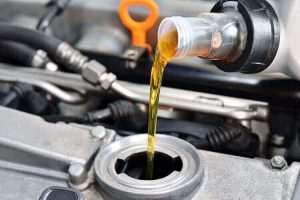Automotive technology has evolved dramatically in recent years, improving road safety and driving. Advanced Driver Assistance Systems (ADAS) in European vehicles are a major advancement. These devices help drivers avoid collisions and maintain lane discipline, making driving safer and more efficient.
What are Advanced Driver Assistance Systems (ADAS)?
ADAS are safety features and technology that automate, adapt, and improve car systems for safer driving. These systems use sensors, cameras, and advanced software algorithms to monitor the vehicle’s surroundings and help drivers avoid collisions. ADAS combines multiple systems to make driving safer and more connected.
Common ADAS Features in European Vehicles
Lane Departure Warning (LDW)
Cams monitor lane lines and inform drivers if vehicles stray out of their lane without signalling. This device reduces accidents caused by driver distraction or tiredness related lane changes or drifting.
Automatic Emergency Braking (AEB)
Sensors identify potential collisions with vehicles or obstacles. The technology automatically brakes to reduce or avoid a collision if the driver fails to do so. This feature is useful in urban and heavy traffic driving. In such complicated cases the Auto Repair in Ardmore, OK acts immediately and fixes the complication same day.
Adaptive Cruise Control (ACC)
The system maintains a predefined speed and distance from the vehicle ahead. ACC uses radar sensors to match traffic flow and slow or speed up the vehicle. This feature reduces driver tiredness and ensures a safe following distance on extended trips.
Blind Spot Monitoring (BSM)
Sensors identify vehicles in drivers’ blind spots and provide visual or audio alerts. This helps drivers make safer lane changes by revealing vehicles not visible in side mirrors.
Traffic Sign Recognition (TSR)
These systems employ cameras to interpret road signs like speed limits, stop signs, and other laws. The driver is always informed of traffic conditions and laws since the dashboard or heads-up display displays this information.
Maintenance is Key for ADAS
ADAS systems improve safety and convenience, but they need frequent maintenance and calibration. Dirt, debris, and even mild collisions can damage sensors and cameras, causing erroneous readings and system failures. Vehicle owners must follow manufacturer maintenance schedules and have ADAS components inspected and calibrated as needed.
Calibration is especially important after windshield replacement or suspension work, which can affect camera and sensor alignment. ADAS features may malfunction due to improper calibration, jeopardizing safety. So, use qualified professionals with the right training and equipment to calibrate ADAS devices.
Conclusion
ADAS are a major advancement in car safety technology, helping drivers avoid accidents and drive safely. These systems use sensors and cameras to monitor the vehicle’s surrounds and respond to risks, from lane departure alerts to autonomous emergency braking. The efficiency of ADAS systems depends on regular maintenance and calibration. Vehicle owners should prioritize regular maintenance and follow manufacturer recommendations to ensure ADAS system functionality. By doing so, drivers can enjoy safer and more connected driving with European ADAS technology.






More Stories
The Role of Fuses in Car Power Lock Systems
Winter-Proof Your Classic Car: Sunroof Care Essentials
Professional Oil Change Repair Solutions for Cars